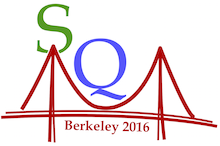Speaker
Description
The production of charmonium states, as the $J/\psi$ and $\psi(2S)$, in heavy-
ion collisions, is an important probe to investigate the formation of a plasma
of quarks and gluons (QGP). In a hot and deconfined medium, quarkonium
production is, indeed, expected to be significantly modified, with respect to
the pp yields scaled by the number of binary nucleon-nucleon collisions, due
to a balance of color screening and charm quark (re)combination mechanisms.
The ALICE Collaboration at the LHC, has measured charmonium production in Pb-Pb collisions at two center of mass energies, $\sqrt(s_{NN})$= 2.76 and 5.02
TeV. The nuclear modication factor of inclusive $J/\psi$, evaluated at both
mid (|y| <0.8) and forward (2.5< y <4) rapidities, is measured as a function of the centrality of the collision and of the $J/\psi$ kinematic variables as
transverse momentum and rapidity.
In this presentation, we will report on the final results on $J/\psi$ and $\psi(2S)$
production at $\sqrt(s_{NN}$= 2.76 TeV and on the new $J/\psi$ results, obtained at
forward rapidity, at $\sqrt(s_{NN})$= 5.02 TeV. These new results will be compared
with the $J/\psi$ nuclear modication factor obtained at lower energy and with
the available theoretical predictions.
